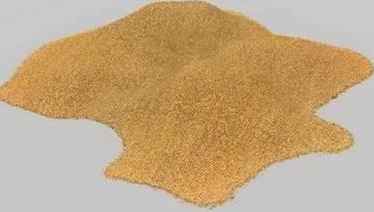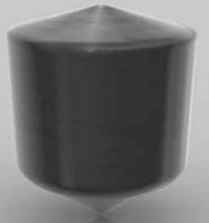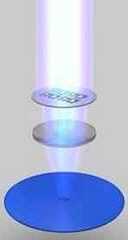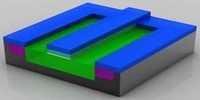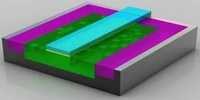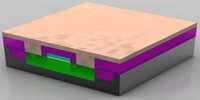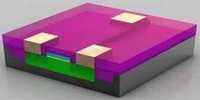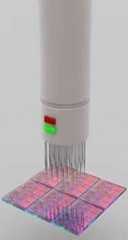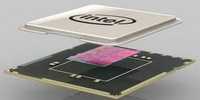1. Introduction: In the modern world where commerce and industry have assured large and long roles to play , the need for entering into contracts of agreements in relation to business and other transactions have become a common and necessary feature of daily life. As man became busier it became more and more necessary for him to depend on others for getting his things done. The hectic activities of the businessmen and industrialists have made the execution of power of attorney for delegating his functions. Granting a Power of Attorney is a legal process that involves the drafting of a document which assigns to another person the power to act as your legal representative. Principal should be careful while authorising an agent as attorney to avoid inconvenience and expense of any legal proceedings in the future.
2. The Statute: This act may be called as "POWER OF ATTORNEY ACT, 1882", which was passed in the year 1882 on 24th feb and the act came into force on first day of May, 1882. This act applies to the whole of India except State of Jammu & Kashmir. The main aim of passing this statute is to make it easy for your designated attorney to access your finances and, in that way, take care of your property.
3. Definition: According to the 'Section: 1A' of "POWER OF ATTORNEY ACT, 1882", "A 'Power Of Attorney' includes any instruments empowering a specified person to act for and in the name of the person executing it".
4. Meaning: The term 'Power Of Attorney' is an authority given by an instrument by one person, called as the donor or principal, authorising another person, called donee or agent to act on his behalf. There may be possibility of giving 'Power Of Attorney' by two or more persons jointly to one or more persons. Here a legal authority is given by the principal to the agent which may be broad or limited and an agent can take all necessary decisions i.e. financial, property related matters and all other matters where principal cannot be present to sign or in the case of principal's illness and disability. A paper signed by principal giving powers to an agent is sometimes itself called a power of attorney. A paper giving a power of attorney should be clear and understandable.
5. Importance of Power of Attorney: A power of attorney document is an extremely important part of estate planning yet one of the most misunderstood. It is often convenient or even necessary to have someone else act for you as there is advancement in the business and commerce transactions. As many people confuse the power of attorney (POA) with a will (Probate), but these documents are two very different things and have two very different functions. A will comes into effect on the day person die. A POA applies during a person's lifetime and ceases to apply when he dies. So you actually need both a POA and a will as they complement, and do not overlap, each other. To add a twist to the subject, there are two types of POA: one for property and one for personal care. These two types are completely separate. They deal with different areas of your life and both are required for effective estate planning.
6. Classification of Attorney: The Power of Attorney can be classified into two categories which includes:
I. General Power of Attorney: A general power of attorney is one by which an instrument is executed by the principal authorising the agent to do certain acts in general on his behalf. The word 'General' here means that the power must be general regarding the subject matter and not general with regard to powers in respect of a subject matter. If the subject matter is not general but restricted to something either specific or specifically mentioned by the principal while drafting an instrument then it will not constitute a general power of attorney. It is otherwise called as limited power of attorney.
II. Special Power of Attorney: A special power of attorney is one by which a person is appointed by the principal to do some specified act or acts. In this type of power of attorney, an agent conferred with a power to do specific act in a single or specified transactions in the name of the principal.
III. Durable Power of Attorney: A Power of Attorney which specifically says otherwise, agent's power ends if principal become mentally incapacitated. However, a power of attorney may say that it is to remain in effect in the event of future incapacity of the principal. A power of attorney that says this is called a durable power of attorney.
To ascertain whether power of attorney is of general or special in nature, the subject matter in respect of which power is conferred Is to be seen accurately. The power of attorney is the unilateral document wherein donor or the principal gives authoritative power to the agent by signing the document and the agent's sign is not always required.
7. Persons Competent To Execute: A power of attorney can be executed by any person who is competent to enter into a contract. However, the married women can execute powers of attorney even if they are minors. A company while executing power of attorney must make conformity with the 'Articles of Association' and its common seal. A person must be competent to give power to the appointed person so that it will not affect the legality of the instrument/deed of power of attorney.
8. Authentication of power of Attorney: As per Indian law, a power of attorney is a legal document that has to be properly framed, using the right legal terminology and setting out the objectives and responsibilities that you wish to authorise the appointee to carry out on your behalf. If a person wants to authorise someone to act as a power of attorney on his behalf, it must be signed and notarised by a certified notary advocate, who is able to declare that you are competent at the time of signing the document to issue the said power of attorney. You will need to show your ID to the notary advocate before he/she is able to certify and issue the document. It must be executed and authenticated by the registrar or sub-registrar of assurances as per the 'Registration Act, 1908'.
9. Presumption About Power of Attorney: A power of attorney is legal written document which has more legal value and the authenticated attorney will be presumed by the court as legal document under 'Indian Evidence Act, 1872'. According to the Section: 85 of 'Indian Evidence Act, 1872', which provides that the court shall presume that every document purporting to be a power of attorney, and has to be clearly authenticate and executed before the notary or magistrate. If there is any issue arises concerning to the genuineness of the attorney then proof of its execution can be called for the verification.
10. Language of The Power of Attorney: An instrument of power of attorney must always use the language known to the donor and if the donor is an illiterate person then scribe and identifier should explain all the contents of the document in the language known by the donor and it has to be certified by the donor that he has understood all the contents and then he has to put thumb mark on the document. Lastly the administrative officer will take the oath from the donor stating that he knows all the contents of the document and he knows the identifier. A sign and seal must be put by the administrative officer after complete verification of the document.
11. Original Documents To Be Verified: A power of attorney which is accurately authenticated by the notary or any magistrate, an affidavit has to be filed with all the original documents of the power of attorney authorising an agent to do certain acts. All the documents will be verified by the court and then court will register power of attorney by putting seal and sign. It is very much essential to make the power of attorney valid.
12. Powers of Attorney by Two or More Persons: A power of attorney may be executed by two or more persons jointly in favour of one or more persons and when there are several persons as attorneys a complete authorisation in letter to be given by one of them for acting severally. A clause should be included while drafting the deed of power of attorney that all the attorneys should act jointly or separately.
13. Duration of Granted Power: A general power of attorney remains in force unless expressly revoked or determined by the death of either of the party. A special power of attorney will be in force until the specified act is not completed. Duration of the power will depend upon the type of the attorney or there may be a fixed period of power granted by the principal which must be included in the deed.
14. Revocation of Power of Attorney: A power of attorney may be revoked at any time by the principal or donor by giving a written notice to the agent, unless it is for a particular fixed period. Revocation usually possible when principal dies or becomes insane or becomes bankrupt. The principal himself can revoke power of attorney if the business for which the agent was appointed is over as mutually agreed upon by the principal and agent. In case if principal has named a spouse or registered domestic partner as his agent, his or her authority to act under the power of attorney is automatically terminated in the event of divorce, legal separation or termination of the registered domestic partnership.
15. Registration: A power of attorney is not compulsorily registrable unless it creates an interest in any immovable property i.e. charge in favour of donee. Registration of power of attorney is optional In India, where the 'Registration Act, 1908', is in force, the Power of Attorney should be authenticated by a Sub-Registrar only, otherwise it must be properly notarized by the notary especially where in case power to sell land is granted to the agent. If a power of attorney is in respect of an immovable property of value more than Rs100 it must be registered. Registration of power of attorney authenticates the deed of power of attorney.
16. Stamp Duty: A power of attorney is chargeable under Section: 48 of Schedule 1 of the 'Indian Stamp Act, 1899'. A stamp duty has to be paid compulsorily by the principal or donor in the jurisdictional registrar's office.
17. Legal Powers Which Can Be Granted To The Attorney: Broadly speaking a power of attorney provides an agent "all powers that the principal has" to manage the principal's financial affairs or make health care decisions may be enough for many purposes. An agent may be authorised to:
i. To execute all contracts, deeds, bonds, mortgages, notes, checks, drafts, money orders.
ii. To manage, compromise, settle, and adjust all matters pertaining to real estate.
iii. To lease, collect rents, grant, bargain, sell, or borrow and mortgage.
iv. To sell any and all shares of stocks, bonds, or other securities.
v. To file, sign all tax returns, insurance forms and any other documents.
vi. To enter into contacts, and to perform any contract, agreement, writing, or thing to make, sign, execute, and deliver, acknowledge any contract, agreement.
vii. To make health-care decisions for the donor or his minor children.
viii. To sue on behalf of the principal.
18. Qualifications of An Attorney: It is the duty of the Principal to appoint a responsible person as agent who should act with utmost good faith. An attorney is a person who has been appointed by the donor to act on his behalf. An ideal attorney is that who must be willing to act in that capacity and he has to be impartial having integrity. An attorney should be loyal to the donor and should not disclose any confidential matters related to the business.
19. Duties of The Attorney Holder: An attorney holder is a person who is authorised by donor legally. An attorney must not exceed the authority given under the power of attorney. If the attorney does exceed their authority, he or she may be liable for any damages suffered by the donor or others. The attorney may, however, do all those acts which are authorised, but only by a particular method, if the power of attorney so indicates. If there is a breach of any condition by the attorney then he shall be liable to the donor except in a case where he has acted reasonably. If there is some doubt as to the wording of the power of attorney, a solicitor should always be consulted. The attorney holder must also act towards the donor with the utmost good faith and tell the donor the nature and extent of any interest which may conflict with his or her duty. An attorney may pass on his or her powers and duties to another person but only if authorised to do so by the power of attorney
20. Other Related Aspects:
-
Construction Rules: The general rule of power of attorney is that it should be strictly construed. Unless an express power is conferred on an agent to enter into contracts of guarantees on behalf of his principal or to execute or negotiate, negotiable instruments for his principal jointly with others. An agent cannot by his acts bind the principal to a larger extent than he is empowered to do under the power of attorney. He cannot be sued or otherwise held responsible for fraud by the agent. If the power does not authorise the agent to carry on a business except with limitations any act done by him in excess of such power will not bind the principal. For example power to dispose of property does not confer a power to mortgage the property. Power to manage immoveable property cannot permit principal's ornaments which are a moveable proper.
-
Drafting of Power of Attorney: A deed of power of attorney must be construed so as to include all powers necessary for its execution. There is no legal requirement that a power of attorney be prepared or reviewed by a lawyer. However, if important powers are going to be given to an agent, it is wise to get individual legal advice before signing a complicated form. A person who signs a power of attorney without fully understanding what it means, and without considering risks and alternatives, is asking for trouble. So a power of attorney must be drafted carefully and after knowing all its clauses written in the deed document.
-
Risk Involved In Granting Power of Attorney: With a power of attorney, an agent is often entrusted with important decisions. And the agent may have access to some or all of Principal's money or other property. If the agent is not trustworthy, serious problems can result. For example, if the agent is dishonest and runs away with Principal's money, it may be difficult or impossible to get the money back. An agent is not permitted to use principal's property for his or her own benefit unless he is expressly authorised to do so. Also, a principal will ordinarily be bound by the agent's acts (even foolish acts) and will be responsible for the agent's negligence while the agent is acting for the principal. For example, if an agent is authorized to manage your financial affairs and signs a contract to purchase something on your behalf, you will ordinarily have to pay for it, like it or not. It is obviously important to choose a trustworthy agent; if no trustworthy candidate is available, a power of attorney should not serve its purpose.
21. Conclusion: A power of attorney is very essential legal document which can be admitted as a evidence in the court of law whenever there is any breach of trust by the attorney holder. It's therefore essential that principal has great confidence in his designated attorney. An agents must be someone principal can trust, without reservation, to use his property for him and not for themselves, or anyone else.
http://www.legalindia.in/power-of-attorney
